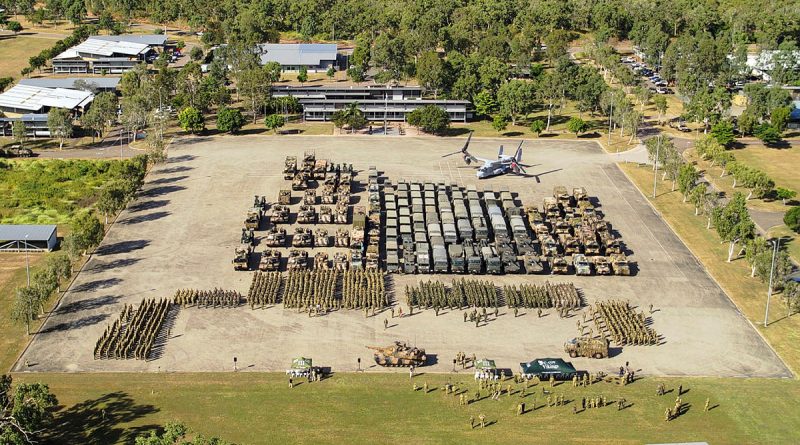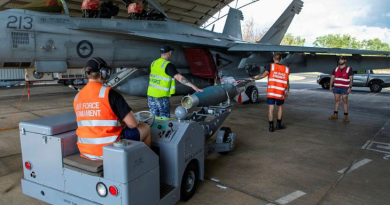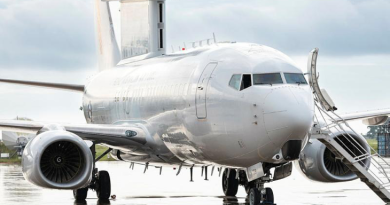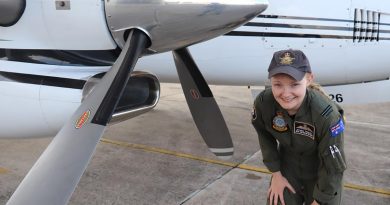Exercise Southern Jackaroo a call to arms

“Let me be blunt, this will not be a walk in the park.”
CAPTION: Australian Army soldiers from 3rd Brigade, alongside members from partner nations, on parade at Lavarack Barracks, Townsville. Story by Major Diana Jennings. Photo by Lance Bombardier Christien Vestergaard.
The cautionary words of Commander 1st (Australian) Division Major General Ash Collingburn echoed over the parade ground at Lavarack Barracks as Australian, United States Marine Corps (USMC) and Japan Ground Self-Defense Force (JGSDF) soldiers stood shoulder to shoulder.
Thousands of personnel, supported by armoured vehicles, artillery and aircraft, prepared to deploy on the largest iteration of Exercise Southern Jackaroo.
“This exercise is more than just training, it is a rehearsal for the realities of war and a proving ground for partnerships,” Major General Collingburn said.
“Every patrol, every fire mission, every radio check between nations, and every shared hardship under the southern sun – it all matters.”
Over four weeks, the soldiers will be challenged in various environments, traversing hundreds of kilometres by road and air to secure population centres, defend and execute attacks against a robust enemy force, and will conclude with a combined live-fire.
“What lies ahead of you is tough, demanding and deliberately so. It is designed to push your limits, because war, if and when it comes, will not wait for you to catch your breath, to check your gear, or to ask for a second chance,” Major General Collingburn said.
“When the first shot is fired, it’s too late to ask how the other bloke operates; that understanding must already be instinct.”
Tripling Japan’s contribution to this year’s exercise, JGSDF Commander 46th Infantry Regiment Colonel Morita Yuya said his soldiers were making the most of Townsville’s large military training areas.
“We are honoured to join this exercise. The attitude toward training is very serious and the training infrastructure in Australia strengthens our response capability in the Pacific region,” Colonel Morita said.
“Many of our soldiers are here for the first time. Australia has a very high level of tactics and we have already learnt many things.”
USMC Task Force Commander Major Nicholas Foust said it was important to use the North Queensland training area to best prepare his soldiers for all potential environmental hazards.
“Littorals are the most likely place that conflict will occur, so that’s our primary focus with this training,” Major Foust said.
“The marines will be working hard. They’ll be tired, hungry and pushing through, but they’re also concerned about being bitten by snakes and spiders here, so that’s a valuable field craft lesson.”
He said building understanding across people, platforms and processes would be the focus.
“Training with our allies and partners, establishing those relationships and preparing together, that’s the most important piece,” Major Foust said.
Major General Collingburn said the exercise would lay the foundation to ensure they were never strangers on the battlefield, but a single, lethal force.
“Interoperability is not a buzzword – it is the difference between confusion and cohesion, between surviving and winning. Our strength in battle lies in our ability to fight together,” he said.
“You’re going out there to train as one team – different flags on your shoulders – but the same mission in the heart and in the mind.”
.
.

.
.





